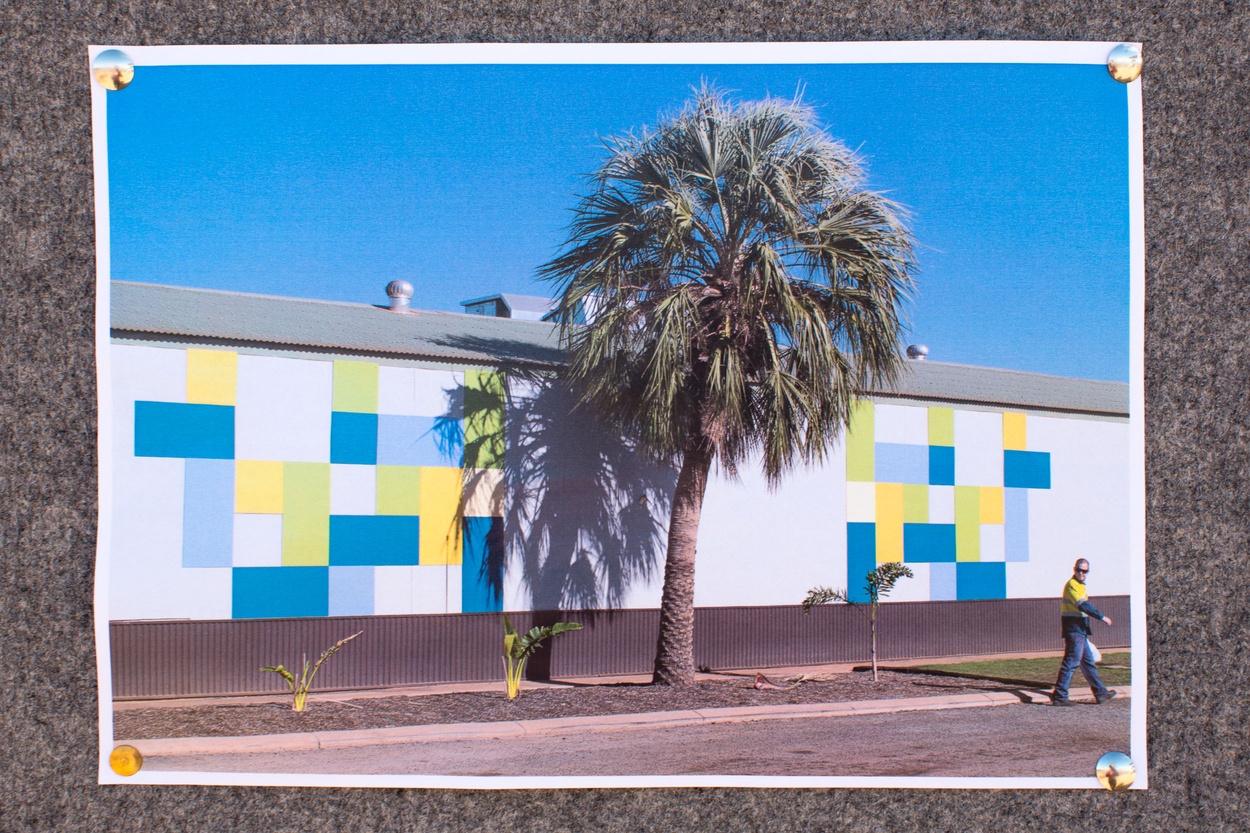Red BBQ Area / past / Port Hedland / 07.14 The Pilbara
←
Red BBQ Area 2014
40 x 35 x 3.9m
Digital print on adhesive vinyl, permanent steel structure and outdoor funiture
Port Hedland, Western Australia

(Installation View) 2014
40 x 35 x 3.9m
Digital print on adhesive vinyl, permanent steel structure and outdoor funiture
Port Hedland, Western Australia

(Installation View) 2014
40 x 35 x 3.9m
Digital print on adhesive vinyl, permanent steel structure and outdoor funiture
Port Hedland, Western Australia

(Installation View) 2014
40 x 35 x 3.9m
Digital print on adhesive vinyl, permanent steel structure and outdoor funiture
Port Hedland, Western Australia

(Installation View) 2014
40 x 35 x 3.9m
Digital print on adhesive vinyl, permanent steel structure and outdoor funiture
Port Hedland, Western Australia

(Installation View) 2014
40 x 35 x 3.9m
Digital print on adhesive vinyl, permanent steel structure and outdoor funiture
Port Hedland, Western Australia

(Installation View) 2014
Dimensions vary
Digital print on paper, existing sign structure
Port Hedland, Western Australia

FMG's Hamilton Hotel 2014
21 x 29.7cm
Digital print on paper, existing sign structure
Port Hedland, Western Australia

(Installation View) 2014
Dimensions vary
Digital print on adhesive vinyl, permanent steel structure and outdoor funiture
Port Hedland, Western Australia

(Installation View - local drainage contractors) 2014
Dimensions vary
Digital print on adhesive vinyl, permanent steel structure and outdoor funiture
Port Hedland, Western Australia
Info
"Red BBQ Area" was an unofficial temporary installation project that covered a road-side rest area with slivers of a photograph from a nearby iron-ore mine workers camp.
The rest area is roughly halfway along the short drive between Port and South Hedland. Port Hedland (pop. 14,000) is the second largest town in the Pilbara Region and primarily operates as a port offloading facility for the Western Australia's mining industry. The immense private profits from mining boom are occassionally forced to spill over into the local community. This typically results in the construction of expensive, 'colourful' and oddly-placed public facilities that rarely align with the resident's needs.
A collaboration project with Elisa Trifunoski.